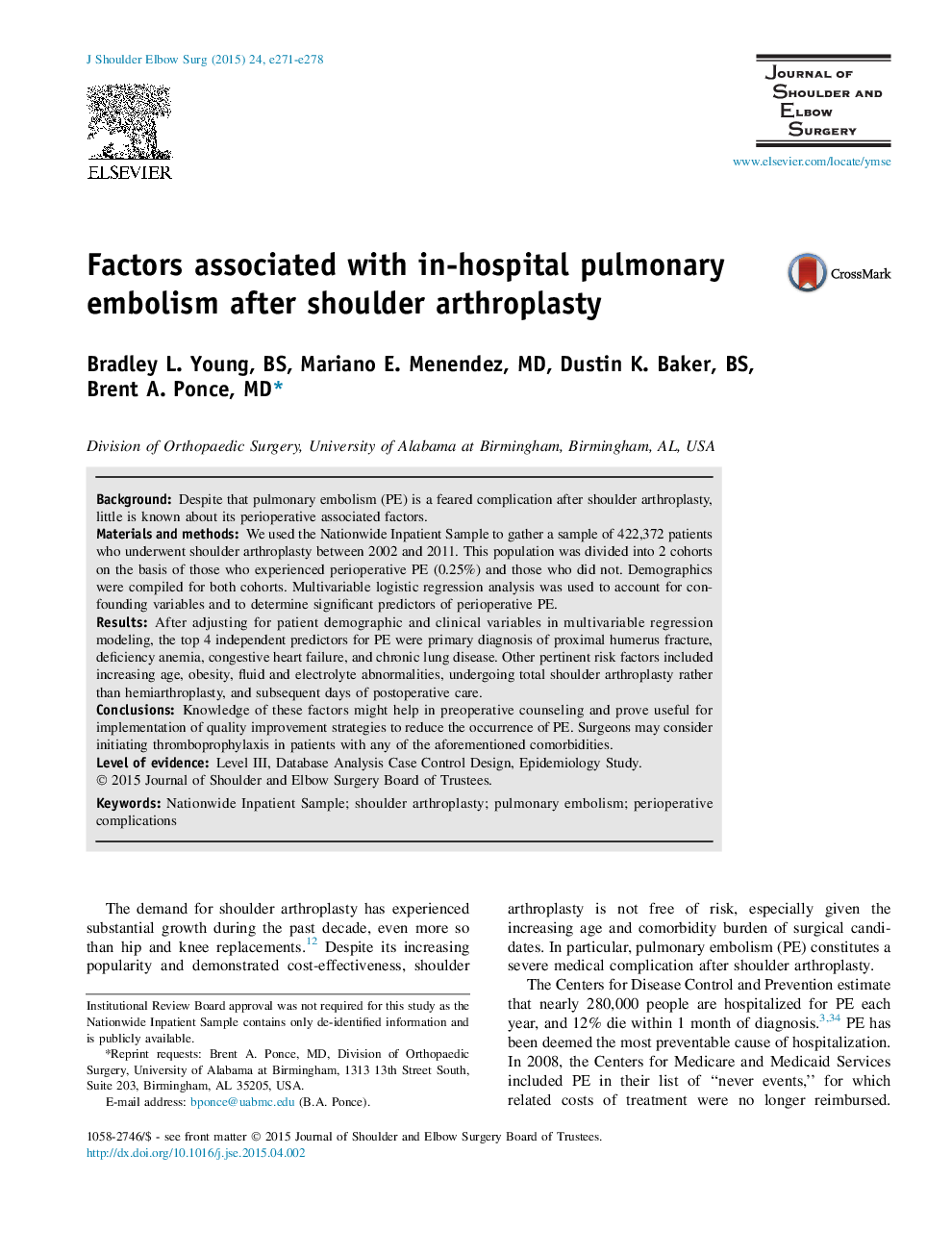| Article ID | Journal | Published Year | Pages | File Type |
|---|---|---|---|---|
| 6211030 | Journal of Shoulder and Elbow Surgery | 2015 | 8 Pages |
BackgroundDespite that pulmonary embolism (PE) is a feared complication after shoulder arthroplasty, little is known about its perioperative associated factors.Materials and methodsWe used the Nationwide Inpatient Sample to gather a sample of 422,372 patients who underwent shoulder arthroplasty between 2002 and 2011. This population was divided into 2 cohorts on the basis of those who experienced perioperative PE (0.25%) and those who did not. Demographics were compiled for both cohorts. Multivariable logistic regression analysis was used to account for confounding variables and to determine significant predictors of perioperative PE.ResultsAfter adjusting for patient demographic and clinical variables in multivariable regression modeling, the top 4 independent predictors for PE were primary diagnosis of proximal humerus fracture, deficiency anemia, congestive heart failure, and chronic lung disease. Other pertinent risk factors included increasing age, obesity, fluid and electrolyte abnormalities, undergoing total shoulder arthroplasty rather than hemiarthroplasty, and subsequent days of postoperative care.ConclusionsKnowledge of these factors might help in preoperative counseling and prove useful for implementation of quality improvement strategies to reduce the occurrence of PE. Surgeons may consider initiating thromboprophylaxis in patients with any of the aforementioned comorbidities.
